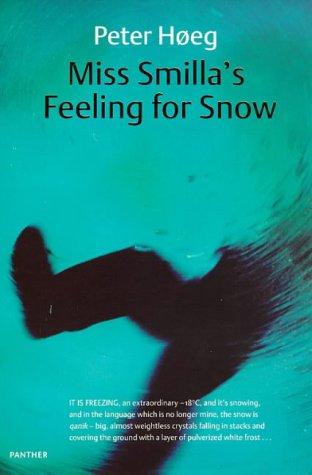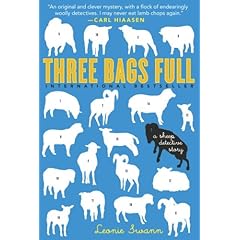Earlene Fowler's Benni Harper Series
Mainly Mysteries met once again on Thursday evening to discuss Benni Harper series by Earlene Fowler, writes Jeannine. Benni is the director of a folk art museum on the central California coast (think San Luis Obispo) and this brought out the “craftier” side of our members. In addition to the display of books we always have available, members brought examples of quilting and other crafts for a large and colorful display. There were traditional and original quilt patterns both large and small, needlepoint, cross-stitch, macramé, wooden bowls – we filled many tables and draped more items over chairs. In addition, several generous souls brought bounty from their gardens to share.
The food table was full as well. To compliment the Hispanic element in the series, we had chili, salsa and chips, and Mexican biscuits. There were several kinds of cakes, fresh plums and blueberry pancakes. New goodies kept arriving, so I may have missed a few. Our “refreshments” are beginning to look more like “dinner.
Eventually we tore ourselves away from the food and began the discussion. Well, we actually filled our plates, set them in front of us, and shoveled it in whenever someone else was talking. Big groups are handy that way. But on to the books….
Typical of our group, it was a very mixed reaction, from many who had read the entire series and loved them, to less satisfied readers, and one who read only 10 pages before tossing it aside.
At the beginning of the series in Fool’s Puzzle (1992), Benni Harper is a young widow, still grieving over the death of her husband in a drunken driving accident, who has tried to start a new life as a museum director, despite her only background being a BA in History. Gabe Ortiz is the new, no-nonsense police chief. Both are drawn into an investigation of a dead body found at the museum. A few of us who only read this first mystery were annoyed with Benni with her constantly withholding information from the police, no matter how many times the situation blew up in her face. Once or twice maybe, but by the third time I wanted to slap her upside the head. Unquote. We asked the other members if this is a recurring problem in the rest of the books, and one said that yes, that’s Benni’s “thing,” don’t tell Gabe because… (he’s too busy, it might upset him, she wants to check it out first, etc.), and it’s a common writer’s ploy to keep the amateur detective in the action.
 After having voiced some of our annoyances, we moved the discussion to members that really enjoyed the series, and asked for favorites. Fowler's Agatha Award winning Mariner’s Compass (1999) came highly recommended as one of the more intricate and interesting plots. Benni is left an inheritance of a house from a man she does not know and with no idea why. She is required to live in the house for two weeks in order to inherit it, and what ensues is similar to a scavenger hunt looking for clues as to who he is and why Benni is to inherit. The reader, alongside Benni, puts it all together bit by bit for a satisfying mystery.
After having voiced some of our annoyances, we moved the discussion to members that really enjoyed the series, and asked for favorites. Fowler's Agatha Award winning Mariner’s Compass (1999) came highly recommended as one of the more intricate and interesting plots. Benni is left an inheritance of a house from a man she does not know and with no idea why. She is required to live in the house for two weeks in order to inherit it, and what ensues is similar to a scavenger hunt looking for clues as to who he is and why Benni is to inherit. The reader, alongside Benni, puts it all together bit by bit for a satisfying mystery.
Another fan enjoyed how Benni had to learn to be a detective; she didn’t just start in being brilliant from the start, but followed more of a learning curve. She liked the pace of the story, how it unfolded slowly, had good red herrings, plausible motives, and didn’t spring new information or characters at the end. Everyone enjoyed the character of Grandma Dove – sort of the comic relief – and her pithy sayings. One member especially liked the feud she had with another character (an aunt?) wherein each would quote Bible passages in phone messages to make their point, and how furious she became when their feud moved to the Old Testament and she was forced to actually look some up.
Most people who had read the first book in the series also thought Benni mourning for her husband was very believable and handled well.
Many members had approached the series looking forward to learning more about the folk art elements and quilting pattern histories seemingly promised in the book titles (all traditional quilt block patterns), and while the author obviously had done research in what various artifacts looked like, she had done less on how to handle the items. Or perhaps this was done on purpose to reflect Benni’s lack of experience and training as a curator. Whichever, many non-experts still cringed when Benni handled material without cotton gloves, looked under material by ripping out stitching, and (prepare to cringe and wince) hung quilts on the wall using Velcro. Historical quilts. Velcro. Shudder.
Some book titles/quilt patterns had stronger ties to their story than others. In Mariner’s Compass, there is a mariner’s theme in the house and its location, as well the compass aspect of pursuing clues in every direction. In Steps to the Altar (2002) Benni is helping as a wedding planner and several secondary characters are getting married. Arkansas Traveler (2001) has a strong connection as Benni goes back to her hometown in Arkansas. In another title, a particular quilt was a clue. But other titles only touched on some aspect of folk art, and none are considered great sources of background information (as a Tony Hillerman title would be for Navajo culture, or Nevada Barr for various National Parks).
Our next member was looking forward to learning something from the series, and thought the setting was good, the characters were interesting, but there was no suspense. By page 70, nothing had happened. He likened it to watching an episode of Twin Peaks (my fingers just did their dyslexic thing and typed “epidose” – which, if you’ve ever seen Twin Peaks, actually makes more sense).
The next member read Irish Chain (1995), said there was a confusing story with characters mistrusting one another, a couple of murders, and then the story picks up about halfway. She was disappointed that the characters “do uncharacteristic things.”
 And then Dove in the Window (1998) was deemed “pretty good.” The reader liked the fact that Gabe was Hispanic. In this particular title there is a lot of animosity between some of the main secondary characters, with even Gabe (Mr. Police Chief) taking it to a fistfight. Obviously something does “happen” in this one.
And then Dove in the Window (1998) was deemed “pretty good.” The reader liked the fact that Gabe was Hispanic. In this particular title there is a lot of animosity between some of the main secondary characters, with even Gabe (Mr. Police Chief) taking it to a fistfight. Obviously something does “happen” in this one.
Another member unable to attend made sure we were told that she has read all of the series and highly enjoys them (she also hated Pride and Prejudice, and loved Bangkok 8 if that tells you anything). Whereas the next member only read about 10 pages of one title and said it belonged in the Chili Peppers group instead of ours. One last criticism was that in one story, men kept grabbing Benni by the shoulder, almost like an assault, that it was very “heavy handed.” It just came out that way. She’s sorry. After we finished laughing, we all got up and took an informative tour of the crafts on display. There are some very talented people in our group. No, none of it was mine. Sigh.







